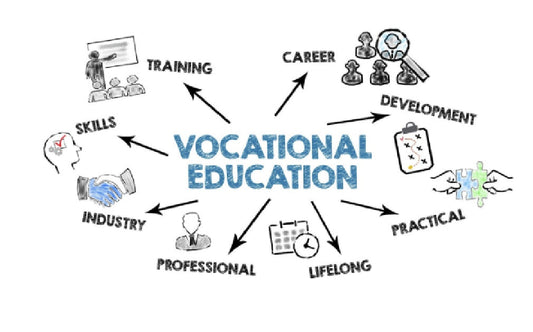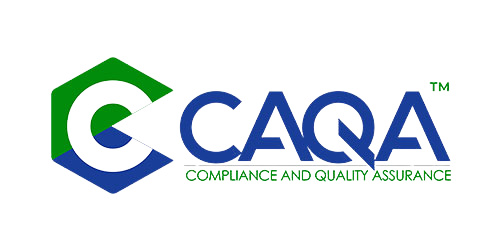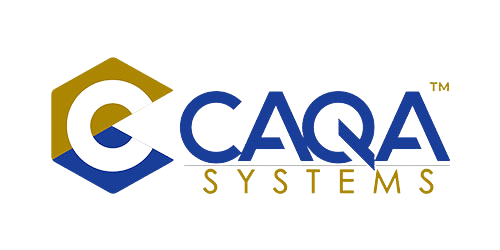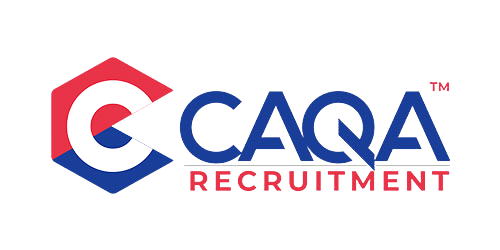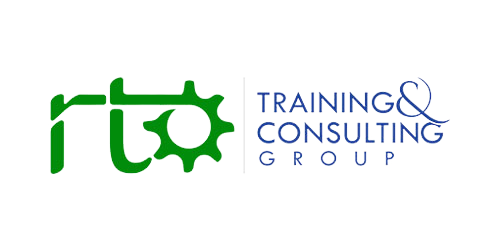Why this matters now
Australia’s early childhood education and care system has entered a new era of accountability. Over the past quarter, the national legislative program has moved from incremental reform to structural reset, and the implications for vocational education providers are immediate. A new law strengthening the regulation of early education has created a true one-strike consequence for serious breaches, mandated 24-hour reporting of abuse allegations, and equipped the Commonwealth with powers for unannounced inspections that stand alongside existing state and territory oversight. These changes arrive in tandem with a universal access guarantee that will fund at least three days of subsidised care each week from January 2026, a digital safety code that becomes mandatory across services, and a multi-billion-dollar workforce retention package designed to stabilise staffing. Together, they redraw the risk landscape for early childhood services and, by extension, redefine the competencies VET graduates must bring to work on day one. The reform agenda is not abstract or optional; it is a hard deadline that requires curriculum revision, assessment redesign, placement recalibration, and a much deeper focus on real-world judgment under pressure. The legislative centrepiece has now passed the federal parliament, with plain-English digests and commencement schedules publicly available, and the universal access guarantee has cleared the legislative process with commencement set for January 2026. The policy record is unambiguous, and the clocks have already started.
The one-strike era begins
The new law delivers what many in the sector once considered unthinkable: a one-strike consequence for serious misconduct. This is not about minor non-conformances; it applies where evidence indicates serious safety breaches, deliberate fraud, or conduct that places children at risk. In those circumstances, the Commonwealth can suspend or revoke funding immediately, and the enforcement framework now includes a public register of compliance actions so that families can see where services have been sanctioned. The one-strike capability alters the psychology of practice. Instead of iterative improvement cycles buffered by multiple warnings, frontline decision-making now carries existential stakes for services. That reality must be built into training from the first week of a Certificate III or Diploma program, because new entrants will step into workplaces where a single lapse can cascade into funding termination, reputational damage, and closure. The statutory settings are set out in the Act and in parallel departmental guidance, and the enforcement register is already expanding as new matters are recorded.
Unannounced inspections and dual regulators
What changes in practice is not that inspections occur, but that federal officers now have direct powers to arrive without notice under Commonwealth law. This authority supplements, rather than replaces, state and territory regulatory oversight under the National Quality Framework. For educators, that means two layers of scrutiny and two sets of expectations that sometimes focus on different risks. A service may be visited by state officers who view pedagogy and ratios through the National Law lens, and on another day by Commonwealth officers focused on subsidy integrity, safety protections, and who is physically present in the service. VET programs need to train graduates to operate confidently in both conversations, to retrieve the right evidence quickly, and to explain practice in terms that match the authority standing in front of them. The parliamentary digest summarises the inspection model, while sector coverage has mapped how unannounced federal visits will sit alongside existing protocols.
The 24-hour reporting rule changes incident response.
From 1 September 2025, services must notify their regulator within 24 hours of becoming aware of an allegation, complaint, or incident involving physical or sexual abuse. The previous window of seven days has closed. This shift compresses the entire incident response cycle from recognition and initial documentation through to notification and internal risk controls. It is not enough to teach signs and indicators of harm in isolation; learners must now practise the full sequence under time pressure, including contemporaneous note-taking, accurate distinction between reportable allegations and injuries arising from ordinary play, and clear communication that respects privacy while meeting legal obligations. Official and sector guidance has been explicit about the shortened timeframe and its interaction with other new child safety settings, with the commencement date already in force.
Digital safety is no longer optional policy wording.
A digital safety code for early childhood settings took effect on 1 September 2025, backed by national guidance that requires services to implement child-centred digital safety and data protection policies. This is not a superficial paperwork task. It reaches into daily practice: how images are captured and stored, how devices are used by staff and children, how CCTV is governed, and how communication platforms interface with families. VET graduates need to understand consent protocols, image rights, retention and access rules, and what to do when technology or a platform design clashes with the service’s legal obligations. National information sheets now spell out the expectations and link them to the broader child safety reforms. The days of treating digital risks as “IT’s job” are over; they are now frontline responsibilities for educators and service leaders.
Universal access changes the operating model.
From January 2026, families will have a legislated guarantee of three days of subsidised early learning each week, irrespective of traditional activity tests. This universal access setting will shift attendance patterns, alter cohort profiles, and create demand spikes in communities that historically faced access barriers. For educators, that means more variable attendance, more work in building relationships with families new to the system, and new conversations about entitlements and fees that require confident literacy in the subsidy framework. For VET providers, it means teaching graduates to plan programs that maintain continuity of learning when attendance is irregular, and to document progress for children whose pattern of participation changes week to week. The law has passed, and the commencement date is set, which means the operational consequences can be forecast with confidence and embedded into case-based learning now.
Stabilising the workforce and the risks of acceleration
A national retention package worth billions has been funded to keep experienced educators in the sector through 2026. The policy intent is to slow turnover while capacity expands under universal access and new safety settings. Retention payments will help, but they also create new demand for accelerated training pathways as services compete for newly qualified staff. That is where RTOs face a quality trap. The compliance demands of one-strike enforcement, 24-hour reporting, and digital safety cannot be met by compressing programs without compensating for design depth. Recognition of Prior Learning becomes more important, not less, but it must be genuine. Assessment that tests recall will not protect a service when a real-world judgment call is required at 6.15 pm on a Friday, with a 24-hour clock already ticking. Budget papers and portfolio fact sheets confirm the scale and timing of the retention measures, but it is training design, not funding size, that will determine whether the workforce can operate safely under the new rules.
Practice under pressure becomes the core graduate outcome.
The new environment demands professional judgment that is calm, fast, and defensible. In practical terms, that means teaching learners how to recognise harm patterns in the moment, how to gather facts without contaminating a potential investigation, and how to decide what must be reported now versus what should be documented and monitored. It means rehearsing conversations with families where legal duties constrain what can be shared, and it means understanding that poor documentation can look indistinguishable from bad practice once a matter reaches a regulator. Live scenarios and simulations need to move from the margins of programs to the centre. Graduates should have practised an entire incident cycle, handled a surprise inspection briefing, and navigated a digital consent dilemma before they ever stand in a room with children. The legislative architecture gives the reason, but only the training architecture can deliver the capability.
Placements must mirror the new regulatory reality.
Work placements are the crucible where theory becomes practice. Under a one-strike regime, their design must reflect real risk. That means placements in services that can model the new incident response timelines, demonstrate functioning digital safety controls, and show staff how to prepare for a visit from either level of government. It also means that supervising educators need briefings from RTOs about the curriculum changes so that on-floor coaching aligns with what learners are being taught. The most powerful placement now is the one where a student shadows the preparation for an unannounced inspection and sees, in real time, how evidence is assembled and presented. With a public enforcement register now visible, learners can see how compliance outcomes translate into reputational effects that families notice.
Assessment must prove applied competence, not attendance.
The assessment consequences of these reforms are clear. Multiple-choice quizzes cannot credibly evidence a graduate’s ability to triage an allegation within an hour and complete a regulator-ready notification within a day. Written responses alone do not prove that a learner can structure a conversation with a family when emotions are high and legal thresholds must be met. Providers should move toward structured practicals that simulate time-bound decision points, documented to an audit standard. Digital safety competence should be shown by configuring real or sandbox systems to the policy requirements and by demonstrating how to produce the right records when asked. The move to unannounced federal inspections will reward graduates who can assemble and explain evidence, and it will expose those who learned processes only as checklists. The case for that shift is strengthened by the parliamentary digests and information sheets that make the new expectations explicit.
Jurisdictional overlays require a portable understanding.
National changes do not erase state and territory differences. Victoria’s early years reforms continue to expand free kindergarten and introduce new programs, while other jurisdictions are following their own timelines for workforce and access initiatives. The practical effect is that graduates may encounter different funding rules, program structures, and reporting lines depending on where they work. Training should teach the national core and then develop the skill of reading local instruments and translating them into daily practice. The graduate who can open a jurisdiction’s guidance on Monday morning and map it onto the national rules will be safe across borders and far more valuable to employers. State program descriptions and sector briefings document these variations and their pace of rollout.
Infrastructure expansion will change service contexts.
A dedicated national fund is now in place to build capacity, with a specific focus on services located on school sites and in undersupplied communities. As new rooms open on school campuses, educators will work in hybrid environments where governance, culture, and daily rhythm feel different from standalone centres. That requires different relationship skills, a thoughtful approach to transitions, and comfort advocating for play-based learning within more school-like settings. For VET providers, it justifies new placement partnerships with services that are co-located with schools, since those contexts will account for a growing share of available roles. Budget papers set out the fund’s scale and intent, which allows programs to brief learners on what to expect and why those settings will grow.
Technology competence without techno-solutionism
Artificial intelligence and advanced documentation tools are arriving in early learning, but they have not been legislated into the classroom. They are sectoral trends, not statutory mandates. The risk is that tools designed to make life easier can push practice away from children if used without care. Training should therefore treat technology as a means, not an end: graduates should learn to scrutinise how apps capture children’s images, to question auto-generated “learning stories,” and to check whether data retention is compliant with the new code. If an analytic dashboard contradicts what a practitioner observes in the room, the graduate should be equipped to reconcile those signals and to explain that reasoning to a regulator or a family. The national information sheets around digital policy provide the baseline; programs can then add critical thinking around emerging tools so that technology enhances, rather than displaces, relationships.
Ethics and well-being are now compliance essentials.
A system that expects rapid reporting, public disclosure of sanctions, and readiness for surprise inspections will test people, not just processes. Resilience and ethical courage become compliance capabilities in their own right. Graduates need language for ethical tension, strategies for calm decision-making under time pressure, and an understanding of how to care for themselves and colleagues after difficult incidents. Teaching learners how to debrief properly, how to seek supervision when judgment feels clouded, and how to document reflective practice is not a nice-to-have; it is part of staying safe under a one-strike regime. Sector news and official communications have emphasised that culture and training quality determine whether rules translate into safer experiences for children.
The new calendar of change
Two dates dominate the planning horizon. The first has already arrived. From 1 September 2025, the tighter child safety rules came into effect, including 24-hour reporting and the digital safety requirements. The second arrives on 1 January 2026, when child safety responsibilities become explicitly embedded within the National Quality Standard and the universal access guarantee begins. Between those dates, services will adjust incident protocols, update policies, and interact with the enforcement register in new ways. VET providers need a parallel calendar: publish revised curricula now, graduate learners who have practised the new incident timelines by the end of the year, and ensure the first 2026 intake starts with universal-access scenarios as default case studies rather than add-ons. Parliamentary and departmental sites carry the formal commencement information and should anchor provider planning.
What competence looks like under the new rules
Competent practice now looks like a room leader who notices a small but concerning pattern, captures facts that are objective and time-stamped, escalates quickly, and completes a regulator-ready notification within hours without breaching privacy. It looks like an educator who can show a Commonwealth officer the service’s digital image policy, demonstrate how a platform is configured to enforce consent settings, and retrieve logs that prove the controls work. It looks like a director who welcomes an unannounced visit from either level of government because the team has rehearsed how to collate evidence, and the service’s daily routines already align with what the law expects. These are not idealised states. They are concrete behaviours that training can teach, coach, and assess when programs are designed for the world that has now arrived. The legislative record confirms the policy direction, and the sector’s own reporting shows that the rules are already being enforced and publicised.
A note on nuance and accuracy
Two clarifications help keep the conversation precise. The one-strike power is reserved for serious breaches; improvement pathways continue for lower-level non-compliance. And while federal officers can now arrive unannounced, state and territory regulators retain their full authority. The system is concurrent, not centralised. This is why graduates must be bilingual in the two regimes and understand how they intersect in the field of service. Finally, while new digital rules are mandatory, wider technology adoption, such as artificial intelligence, remains an emerging practice trend rather than a legal requirement. The official digests, departmental pages, and national information sheets support these distinctions.
What VET leaders should do next?
The safest path forward is to treat the new law as a curriculum blueprint and the universal access guarantee as a demand signal. Re-sequence programs so that incident response and digital safety move to early units rather than late electives. Build an assessment that proves applied competence within real timeframes, and audit placement partners for readiness to model the new expectations. Brief all sessional trainers on the changes and provide them with standardised scenarios, exemplar notifications, and annotated policy templates. Align graduate profiles with the new environment so employers know that a certificate from your organisation signifies people who can act fast, document well, and speak confidently to both levels of regulators. The legislative groundwork has been laid. Providers that adapt now will graduate practitioners who keep children safer, keep services open, and keep public trust intact when scrutiny is at its highest. The record is clear on what has changed and when it changes again; the rest is design and delivery.





